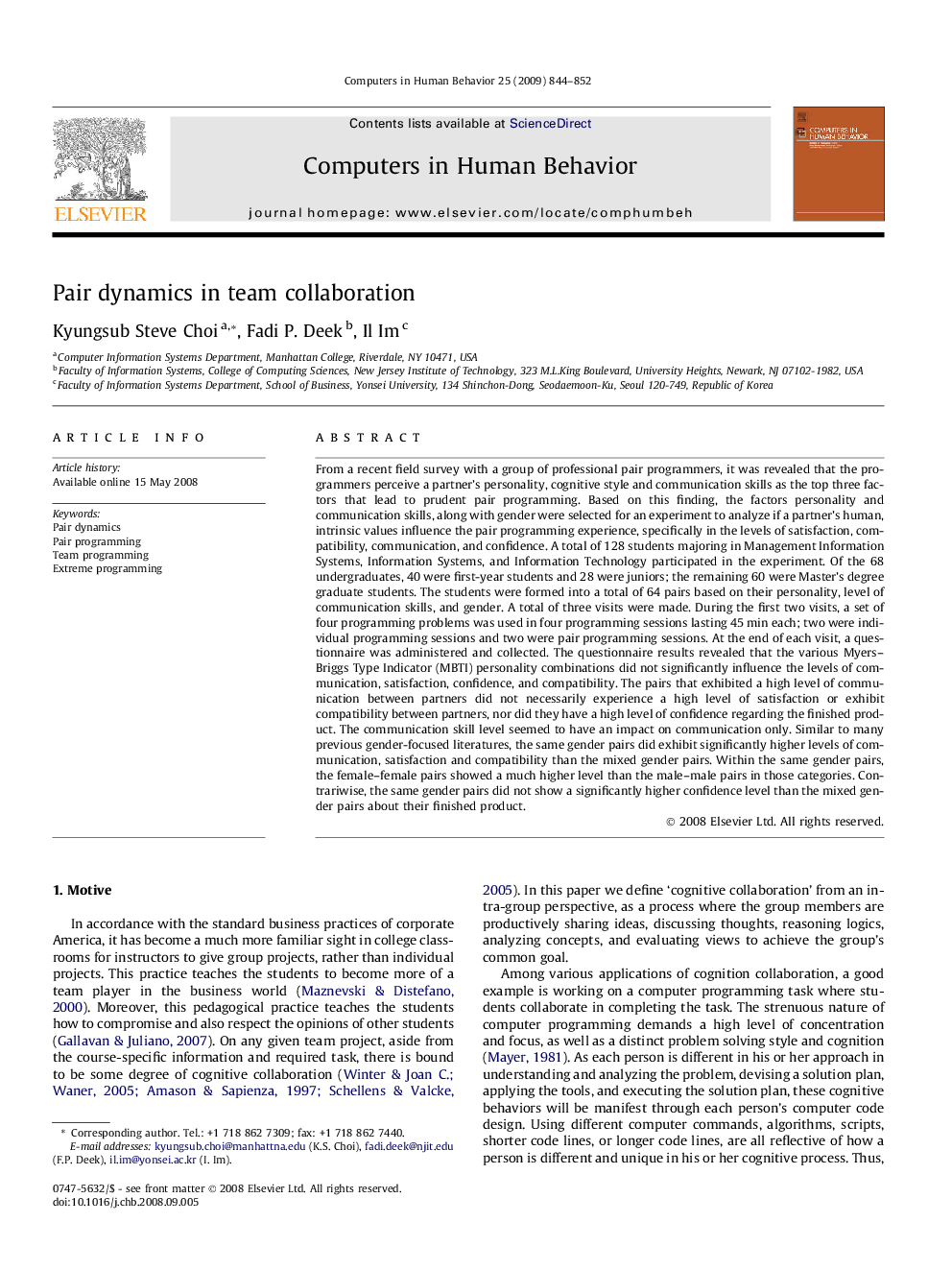| Article ID | Journal | Published Year | Pages | File Type |
|---|---|---|---|---|
| 352064 | Computers in Human Behavior | 2009 | 9 Pages |
From a recent field survey with a group of professional pair programmers, it was revealed that the programmers perceive a partner’s personality, cognitive style and communication skills as the top three factors that lead to prudent pair programming. Based on this finding, the factors personality and communication skills, along with gender were selected for an experiment to analyze if a partner’s human, intrinsic values influence the pair programming experience, specifically in the levels of satisfaction, compatibility, communication, and confidence. A total of 128 students majoring in Management Information Systems, Information Systems, and Information Technology participated in the experiment. Of the 68 undergraduates, 40 were first-year students and 28 were juniors; the remaining 60 were Master’s degree graduate students. The students were formed into a total of 64 pairs based on their personality, level of communication skills, and gender. A total of three visits were made. During the first two visits, a set of four programming problems was used in four programming sessions lasting 45 min each; two were individual programming sessions and two were pair programming sessions. At the end of each visit, a questionnaire was administered and collected. The questionnaire results revealed that the various Myers–Briggs Type Indicator (MBTI) personality combinations did not significantly influence the levels of communication, satisfaction, confidence, and compatibility. The pairs that exhibited a high level of communication between partners did not necessarily experience a high level of satisfaction or exhibit compatibility between partners, nor did they have a high level of confidence regarding the finished product. The communication skill level seemed to have an impact on communication only. Similar to many previous gender-focused literatures, the same gender pairs did exhibit significantly higher levels of communication, satisfaction and compatibility than the mixed gender pairs. Within the same gender pairs, the female–female pairs showed a much higher level than the male–male pairs in those categories. Contrariwise, the same gender pairs did not show a significantly higher confidence level than the mixed gender pairs about their finished product.
